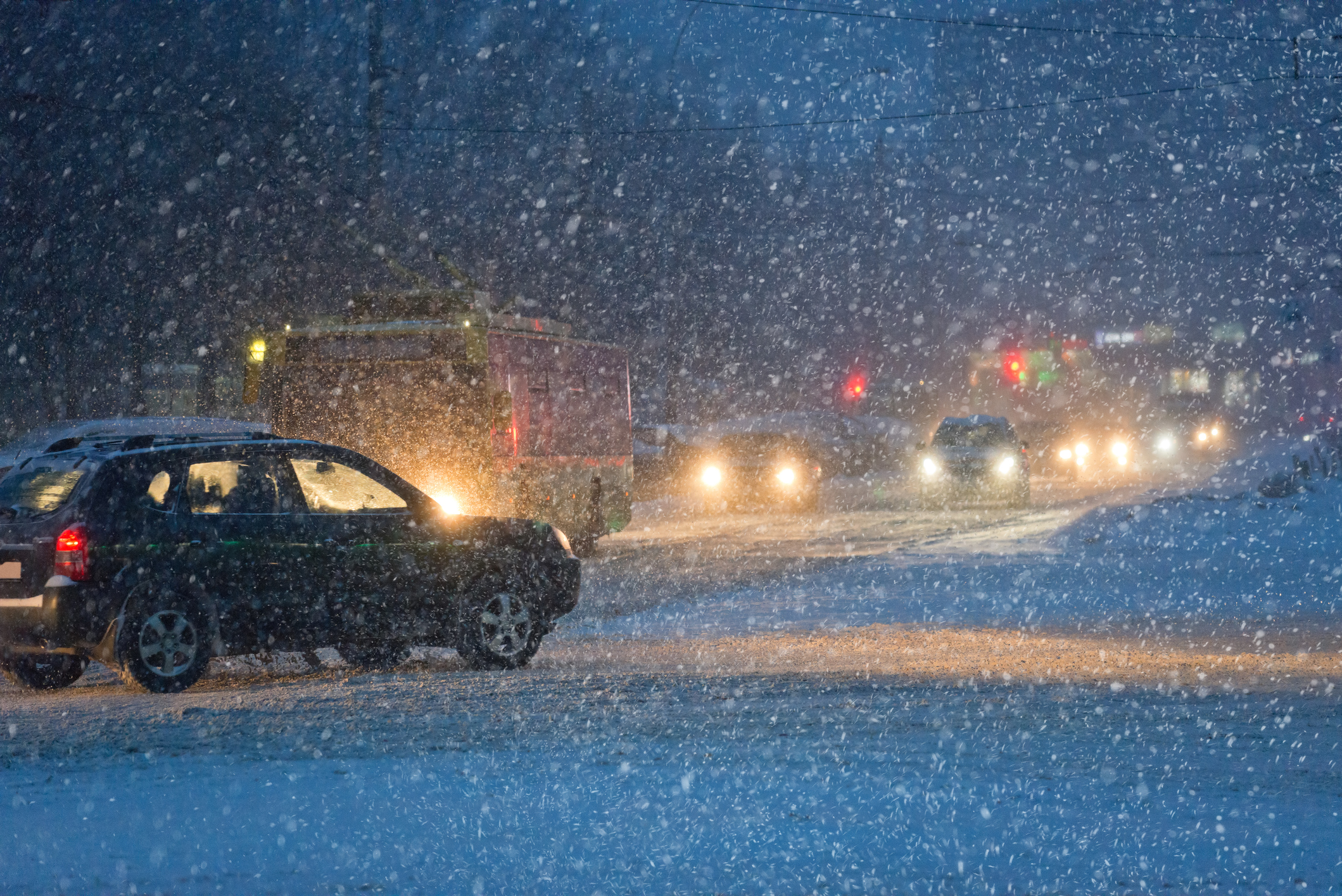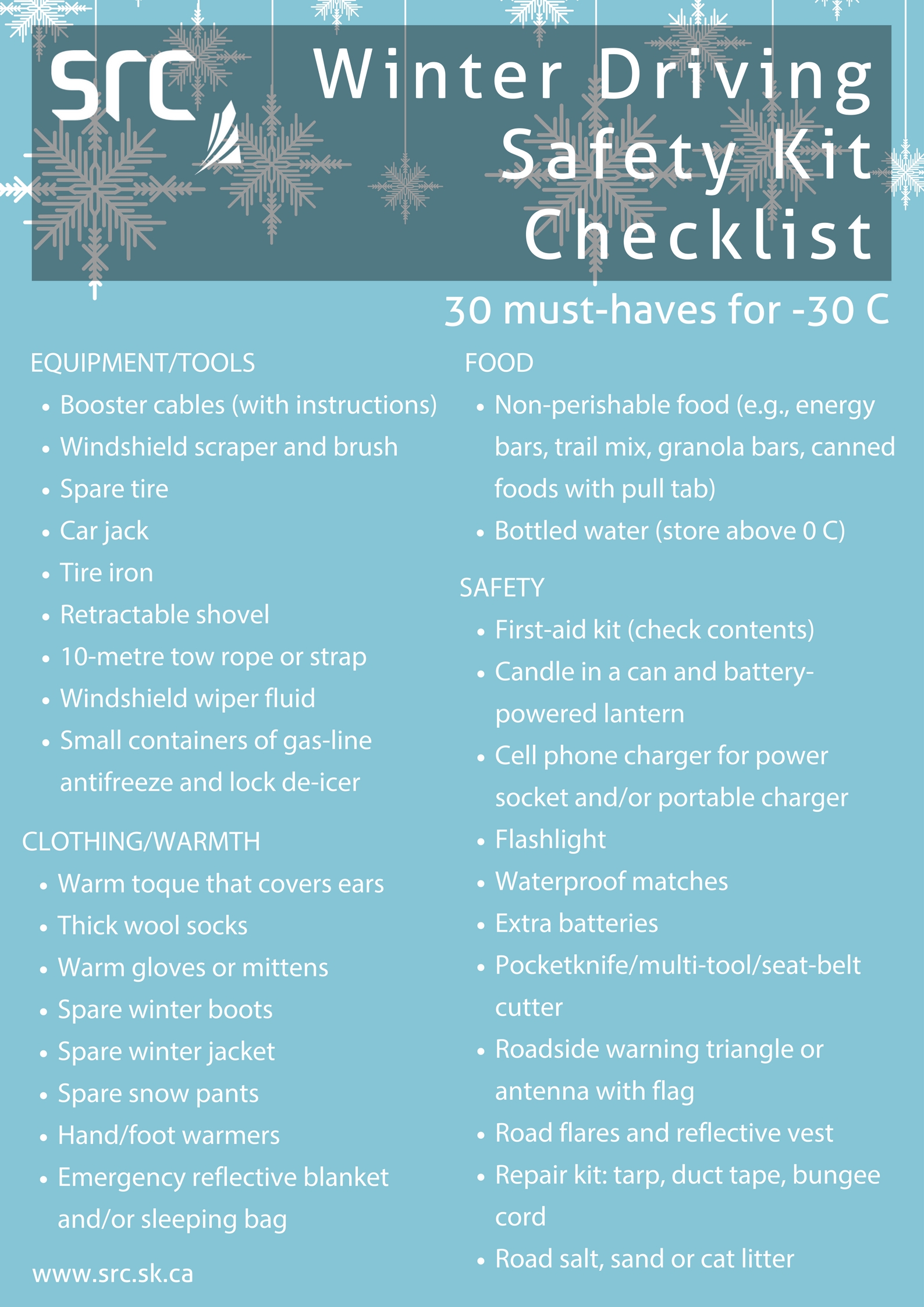Date Posted

Here in Saskatchewan, we get weather extremes from beautiful sunny winter days to blizzards with whiteout conditions where you can’t see your hand in front of your face (read more about extreme winter weather hazards). The change from one to the other can happen quickly, so you need to be prepared when travelling in Saskatchewan in the winter.
Before you hit the road
- Check weather reports and forecasts, as well as road condition hotlines. Be prepared to delay your trip if conditions are not favourable.
- Ensure your vehicle is in good mechanical condition (preferably with quality winter tires).
- Make sure you have your emergency kit stocked up and in your vehicle. The kit should have a number of items including food, water, warm clothing, perhaps a sleeping bag, a shovel, booster cables, tow rope, a traction aid (like kitty litter or sand), a survival candle (commonly called a 30-hour candle) and matches. The point is you need to stay fed, watered and warm. See our handy Winter Driving Emergency Checklist at the end of this post.
- Plan your route to avoid remote and/or poorly travelled roads if possible. Prior to leaving, make sure someone knows where you are going, when you are leaving and when you expect to arrive, as well as the route you are travelling. This way, if you don’t arrive when expected, they know where to direct the search party.
- Fuel up! Always drive with the gas gauge no less than half full in the winter. If you get stuck, at least you’ll be able to stay warm in your car.
When you’re driving
- If the weather gets bad during the trip, be ready to stop at the nearest motel/hotel and wait out the storm. If this happens, be sure to inform your contact of the change in plans.
- Skids are more likely to happen in winter due to poor traction. If you find yourself in a skid, look in the direction you want to go and steer in that direction. Avoid both the brakes and the gas - this puts extra demands on the available traction. Instead, gently ease off of the gas until you regain control.
If you end up stuck
- Set up something to keep your car visible, especially if your car is in a snow bank. I was once walking on a snow bank, heard a strange hollow sound, scraped away a bit of snow and found there was a car beneath my feet, completely buried in the snow.
- Do NOT leave the vehicle and try to walk for help. This is when many fatalities can happen. Stay with your vehicle. Use your emergency kit for warmth and nourishment. If possible, periodically start your car and run it to keep warm. This way, the vehicle will still start when it’s safe to drive again. You will need to shovel snow away from around the tailpipe at intervals to prevent carbon monoxide poisoning.
- Use the candle in your emergency kit to create heat inside the vehicle and to melt snow for drinking water. Open your window a bit to allow fresh air in while the candle is burning. Do not leave it burning unattended while you sleep.
- Keep your cell phone charged (a portable charger is useful here). If possible, inform your contact of what has happened and approximately where you are.
This is not an exhaustive list of possible problems and solutions, but it should help you prepare for and come through most of the more common incidents that happen on our roadways every winter.

